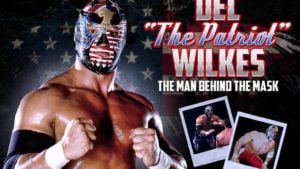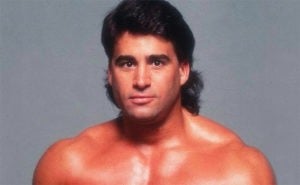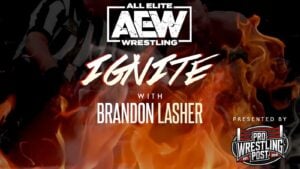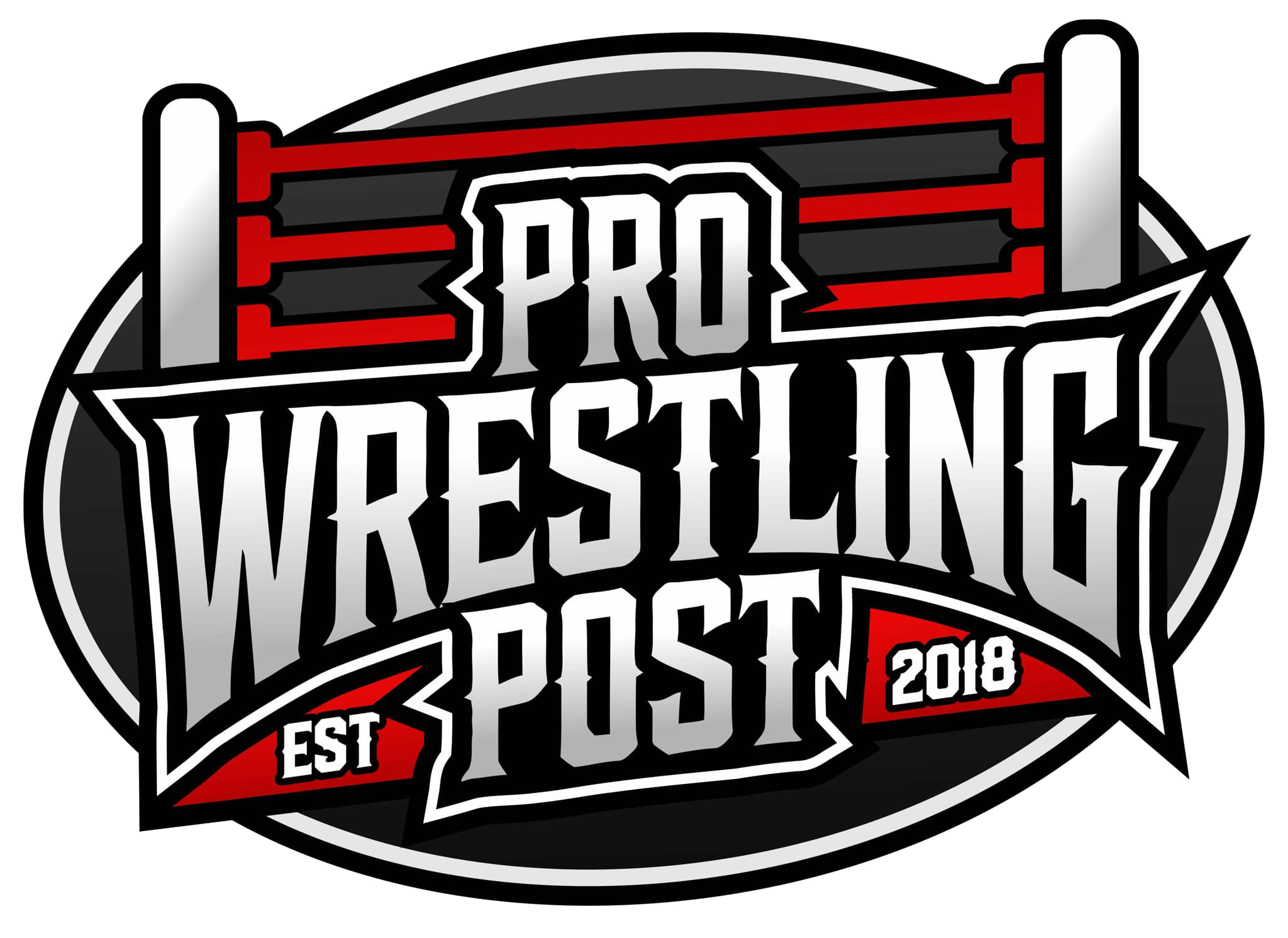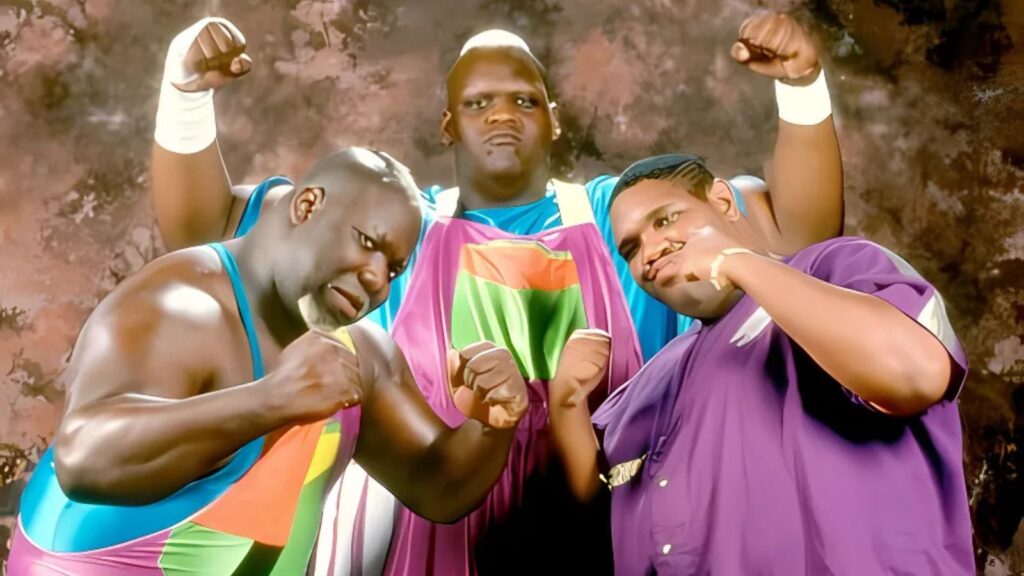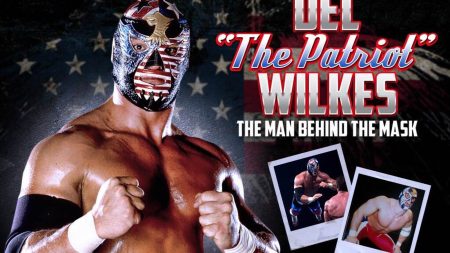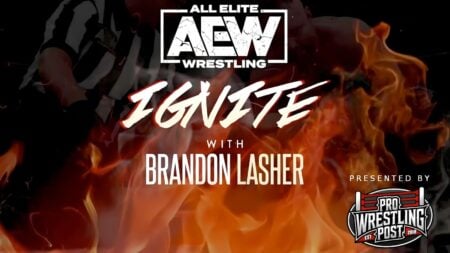Trailblazers are only celebrated if they are successful. Little thought is given to the ones who made way for them. Nobody dreams of following in the path of Men On A Mission. But when you are on a mission, you need to be brave enough to go forward, no matter who is behind you.
Robert “Bobby” Horne was born in Monroe, North Carolina, in 1967. He played multiple different sports at school. But his favourite sport was pro wrestling.
After graduation, he went to indie wrestling shows in a bid to get his foot in the door. He managed to get a chance encounter with Gene Anderson. Horne asked the legend for advice, and Anderson recommended his own wrestling school.
Horne enrolled just in time to receive tuition from Ivan Koloff and Ole Anderson before they moved on. They tried to teach “toughness” by having students practise moves and bumps on the concrete floor.
It was around this time that Nelson Frazier, Jr. joined. Some of the other students joked that they could be brothers due to their similar frames. Gene passed away and the school closed.
Frazier and Horne have the distinction of being Gene Anderson’s final students. However, they did not finish their training.
They had not learned how to get bookings, and had no contacts to help them. Horne suggested they try to break into the business as a tag team.
The duo approached every promotion they could in hopes of a try-out. They even offered to work for free in order to get experience. Both men suspected they were turned down because they were African-American.
The first company to give them a chance was the little-known William Clay Promotions. None of their matches have been recorded properly.
All we know for certain is they made their debuts in 1991. They competed as masked heels called “The Death Squad”. “Voodoo” and “Black Magic” were heavily inspired by the Baron Samedi character from the spy movie You Only Live Twice. Ironically, most of their opponents refused to work with them twice.
They moved on to the Pro Wrestling Federation. The company was run by The Italian Stallion (Gary Sabaugh) and George South.
The two had been regular enhancement talents in several companies, including the World Wrestling Federation. They also introduced multiple rookies to the WWF, including the Hardy Boyz. The PWF was a Christian-themed promotion that hosted family friendly events.
Many of their story lines depicted the battle between good and evil. Stallion was the main babyface, while South managed the bigger heels.
The Harlem Knights – Origins of Men on a Mission
South took a hands-on approach to his newest talents. He repackaged them as “The Harlem Knights”. As the name implies, Nelson and Bobby Knight were two brothers from the notorious region of New York.
He became their manager and taught them how to work as heels. The Knights developed their own unique look. They tried to make themselves look like demons, and their look included bleached Mandinka hairstyles (which are often mistaken for mohawks).
The Knights were booked on long winning streaks. Most of their losses were in battle royals. On one occasion, they forced a battle royal to be declared a draw after they refused to eliminate each other.
They held the PWF Tag Team Championships for four months in late 1992. As much as they loved working for South, it was unsustainable.
It is difficult for wrestling companies to turn a profit. It was even harder for the PWF due to them putting on so many free shows for families.
The Knights helped attract more fans when the company did sell tickets. This allowed the company to put on bigger shows across a wider area. As the top draws, the Knights were booked at all of them.
But they never saw any of the profits. They had been working for free. They both depended on their day jobs as repossession agents to get by. Those jobs became harder as they needed more time off to travel to shows that were further away.
After an event in early 1993, they asked South for help covering the fuel costs in travelling to an event in Virginia. That $5 they received was the only money they had made in two years of wrestling. Nelson insisted they move to Nashville and gamble on their careers.
One of the places they sought a try-out was with the United States Wrestling Association in Memphis. Lawler took one look at Nelson Knight and booked them on the show that night.
They were initially enhancement talents. Many of their matches were losses to teams featuring Jeff Jarrett, the son of promoter Jerry Jarrett. They were not paid much, but at least they were getting paid.
The USWA had a working relationship with the WWF. Lawler was active in both companies at the same time. He was in an elevator with Vince McMahon when Greg Girard pushed his way in.
The Brooklyn-native had two main passions; wrestling and rap music. His main dream was to become a successful rapper.
He performed under the name ‘Casanova Ace’. He got his start by performing at Jewish clubs. Patrons would boo him throughout his sets. He kept going back until they got bored of booing him.
Being hired as an extra at WrestleMania IX was a dream come true for him. His main regret was that his step-father was no longer around to see it.
They had a great relationship, and their biggest bond was their love of all things WWF. They had a few trips to Madison Square Garden to see their favourite legends in action. Girard knew it would be a bigger regret if he did not try to turn this into something bigger.
Part of his pitch to McMahon was an improvised rap. McMahon was impressed with Girard’s talent and initiative and handed him his card.
He then began the search for an African-American tag team for Girard to manage. Girard can be seen on screen behind Bret Hart in between the WWF Championship matches.
“He called back in fifteen minutes. He was still on the plane. And I was like in shock. I’m like ‘This is Vince McMahon; the billionaire philanthropist wrestling man that I watched on TV growing up.’ Because I was a fan.
I watched on Channel Nine on WOR-TV in New York with him Antonino Rocca. I was a huge Vince fan along with everybody else. So, I’m actually on the phone with Vince McMahon.”
– Oscar on his excitement about getting a call back from McMahon.
Lawler pressured Jerry Jarrett to pushing the Knights as a top heel team. They leapt from opening matches to main-eventing overnight.
They both had shots at singles championships too. Their main rivals were The Moondogs, who were the USWA’s highest drawing act.
The Jarretts wanted to hold off on this feud. They knew they would have made bigger money if they had time to build up the Knights first.
The Moondogs were known for their toughness and physically intense matches. Moondog Splat was the only wrestler in the territory who came close to matching Nelson’s size.
The Knights intentionally worked stiff with the Moondogs to prove they were just as tough. Splat became fed up with getting genuinely hurt each time he faced them. Splat decided to retire from wrestling.
The USWA had lost their biggest money-makers, and nobody left to work with the Knights that would draw money.
Jarrett had no further use for the team. He reached out to the WWF to see if they were interested. The Knights were only with the USWA for two months.
The WWF offered the team a try-out. Bobby was particularly keen to make the most of the opportunity. He had two try-out matches a year earlier, and was turned down.
This match coincidentally featured Jason Knight. The Harlem Knights worked as heels, but the fans cheered them throughout. They were offered contracts after this one match.
Men on a Mission – From the ashes of The Harlem Knights
The Knights first met Girard just a minute before they met Vince McMahon for the first time. Their new boss explained his vision for the trio.
The “Men From A Mission” were three guys who had grown up in poverty in an inner-city ghetto. Their ring gear was made from thrift-store clothing that had been sewn together.
Girard was renamed “Oscar”. He became the mouthpiece for the group. Horne was renamed “Mo”. Even he was larger than most opponents, he was painted as an underdog. Frazier became “Mabel”, the powerhouse who crush opponents under his immense size and weight.
They hated everything about their new characters at first. They had worked as heels since day one. They were convinced that management had mistaken them as babyfaces because of the reaction they got at their try-out.
They changed their minds when they saw how crowds got behind them. Thankfully, someone within the company pointed out the characters were a bit racially insensitive. They were refined some more before they made their television debuts.
The changes were unveiled in a series of video packages. They were the first babyfaces to be introduced to WWF viewers this way. They had the more tasteful name “Men ON a Mission”.
They were three African-American men who had achieved success after growing up in an inner-city ghetto. Their mission was to help and inspire youth to live good lives and become the best they can be.
As simple as it was, their “M.O.M.” acronym helped fans remember their names. They accepted Oscar’s suggestion to replace the rags with purple and gold outfits.
Oscar would whip crowds into a frenzy with his freestyle raps. They would chant his catchphrase “Whoomp! There it is” throughout MOM’s matches.
The phrase was the title of a popular rap song by the appropriately named Tag Team. Because Oscar was introducing the group himself, it meant that ring announcer Howard Finkel did not have to.
This was a downside for all three. They loved the adulation they received from crowds, and the chance to work with the wrestlers they watched on TV. Announcers would exaggerate their weight, implying it made them even harder to beat.
For the first several months, they mainly worked with Barry Horowitz, Steve Lombardi, and the Headshrinkers. Horowitz made a career out of making newcomers look better than they were.
Lombardi critiqued new talents and gave them advice on how to improve their matches. The Headshrinkers were part of the Anoa’i wrestling dynasty.
They taught MOM how to work effectively as super heavyweights. All of them were instrumental in helping Mabel and Mo unlearn bad habits they learned in the indies.
MOM were not advertised for their first pay-per-view. Bam Bam Bigelow wanted revenge against Doink the Clown (Ray Apollo) for a series of pranks.
They were made captains of rival teams at Survivor Series 1993. Bigelow enlisted the help of Bastian Booger and the Headshrinkers. Doink waited until match time to reveal his team.
Fans had presumed (with the commentators’ misdirection) that “The Four Doinks” would be him and three other Doinks.
They had seen something similar when Doink (Matt Bourne) was assisted by a second Doink (Steve Keirn) in 1993.
And Doink (Apollo) had teamed with three smaller Dink, Wink, and Pink at the previous Survivor Series. Instead, Doink exploited a loophole where he only had to captain the team. He did not have to participate.
The Four Doinks were quite obviously MOM and the Bushwhackers wearing Doink’s headgear and face paint. The Bushwhackers eliminated the Headshrinkers.
“Mabel Doink” pinned both Booger and Bigelow. Both Mabel and Mo considered it an honour to work their first ever PPV match with Bigelow and the Headshrinkers.
Their next feud would be against the World Tag Team Champions. MOM and the Quebeccers were evenly matched. They exchanged victories for several months.
Any time the French-Canadians looked like they were about to lose the titles, they got themselves counted out or disqualified.
They also go themselves counted out at WrestleMania X. The reason for the 50-50 booking was to elevate both teams.
The trio had their first run-in with “The Kliq” just before WrestleMania. The Kliq were a group of friends led by Shawn Michaels and Kevin “Diesel” Nash.
They had become infamous for politicking and hurting other people’s careers. Michaels had heard that a planned tag team match between MOM and the Headshrinkers had been changed to a singles match between Mo and Samu. He decided for himself that Mabel had been partying too hard and chose to no-show the event.
Michaels intentionally bumped into Mo and cussed at him. During the row, Michaels accused MOM of “stealing money” from Fatu as he got pulled from the tag team match too.
He insisted that Mabel should have worked through his “hangover”. Michaels was unaware that Mabel had shown up to work the event. It was management that had decided his fever was too high and sent him back to the hotel.
After hearing about the argument, they reinstated the tag team match. Doink (Lombardi) took Mabel’s place until he recovered. They had other incidents with the Kliq, but never while Mabel was around.
“If I could change one thing about my career, I would have sat down after that incident with Shawn Michaels and talked the whole thing through.
I wouldn’t have given up so easily on everything. When that I happened, I just gave up on wrestling. If I could change one thing, I would change that incident.”
– Mo on the main thing he wishes he did differently.
MOM finally won the Tag Team Championship a week after WrestleMania. They were the second African-American tag team to hold the titles. Rocky Johnson and Tony Atlas had been the first.
MOM lost the titles just two days later. Both of these title changes happened at un-taped events in England. There was a long-standing myth that the first title change was accidental.
The rumour claimed that Mabel had legitimately knocked Pierre out and he was unable to kick out a pin. The title changes were both scripted. They were part of a plan to encourage fans to buy tickets for untelevised events.
Mo then suffered a leg injury during a match against Owen Hart. The match was taped two weeks before it aired. This meant fans were still seeing Mo compete on television after the injury had occurred.
The company used this as a chance to test Mabel as a singles star. Oscar persuaded management to keep Mo around as extra muscle.
The three men lived together, which meant they usually travelled together. This allowed Mo to continue being their designated driver. He also continued to be paid while he recovered.
“Back then we didn’t have trainers and people bringing us stuff, and taping us up, and sewing us up.
You had what you had in your bag, and that’s it. We had to take care of ourselves. It was really a man’s sport back then. And if you got hurt, you didn’t get paid. So, you had to fight for the top.”
– Mabel on the differences between the Attitude era and the modern era.
MOM returned to being a tag team once Mo was medically cleared. They struggled to gain momentum. The Smokin’ Gunns were being pushed as the top babyface tag team.
McMahon was hesitant about having babyfaces battle each other. As the Gunns were Tag Team Champions, it meant that MOM could not climb the ladder for a while. Fearing for their futures, Mabel asked McMahon for a change.
They suddenly leapt to the top and challenged the Gunns for the titles. They responded to their loss by ambushing the team. They offered to apologise a week later, but this was the setup for another attack.
Oscar tried to persuade them to stop, and was attacked by Mabel. Not only did this mark Oscar being ejected from MOM, but it was also his last day in the industry.
Oscar had never worked in the indies or attended a wrestling school. He did not understand wrestling etiquette or have proper respect for the business.
This, along with his confrontational nature, made him unpopular backstage. He admitted to one incident where he caused a tour bus to depart over an hour late. When Earthquake tried to address this with him, he gave a sarcastic remark.
He was the victim of near-constant hazing. It never happened while Mable or Mo were around. Oscar believed it was an attempt to make him quit. He was determined to ride it out, even when it turned into abuse.
He made the mistake of telling someone it was his birthday. Other wrestlers then allegedly lured him into a room, pinned him over a table, and whipped his bare behind thirty-one times.
Oscar reported the incident to J.J. Dillion who allegedly responded with a joke. The agents had become frustrated with him too.
He constantly questioned their decisions and responded badly to criticism. He was reportedly on thin ice after making an apparent death threat to Lombardi in front of multiple witnesses.
He had already started distancing himself from his teammates. While they had great onscreen chemistry from the start, it took them a while to get along behind the scenes.
For Oscar, the gimmick was real. He had genuinely grown up in poverty in the projects. Working for the WWE had elevated him to a life of near-luxury.
He loved staying in classy hotels, being paid to visit different cities, eating in expensive restaurants, hitting clubs, and meeting celebrities.
He made friends and met girls in every city. He was traveling with Mabel and Mo less often. Oscar had a theory that they started to want him out of the company, too, and were letting some of the abuse happen. This is a claim both Mabel and Mo strongly deny.
“They abused him that night. I think they did everything to him. They pissed on him. They covered him with shaving cream. They had him taped to that [urinal].
The beautiful thing about Oscar was he would just shake that stuff off and laugh it off. He wouldn’t make waves. Okay. He knew he was in a hostile environment.”
– Mo on how Oscar handled hazing.
When they were informed that MOM was turning heel, Oscar was the only person who objected. He genuinely enjoyed having children look up to them as role models. This proved to be the final straw.
Girard was refusing to turn heel with MOM. Management had no other ideas for him outside of the group. They decided to let him go, and he moved out of their shared house.
In spite of all that happened, Girard maintains a heavy passion for wrestling, especially the WWF-era. He is proud of his 1994 Slammy Award for “Best Entertainer”, and believes he paved the way for every other rapper character. Girard became heavily involved in radio broadcasting and music.
The heel turn was another push for Mabel. He was now a main-eventer and was treated as such. Mo was relegated to being his lackey at ringside.
Mo mainly worked matches at un-taped house shows. His only televised match was a tag team match at In Your House 2: The Lumberjacks.
Mabel theorised that this would be their final match on television for a while and suggested they both go all out. The match saw Mo attempt the first top rope moonsault of his career.
He had also gone from being the life of every party to never being invited. MOM slowly discarded everything that appealed to fans.
Starting with Mabel’s victory at King of the Ring 1995, they were repackaged as “King Mabel” and “Sir Mo” respectively. Opponents had not liked working with MOM because they were clumsy in the ring.
While Mo learned the lesson and adapted, it appeared that Mabel had not. He injured two of the company’s biggest stars just weeks apart.
They were relegated to enhancement talents. Most of Sir Mo’s remaining matches were losses to Horowitz and the Gunns, all untelevised.
MOM were told at the 1996 Royal Rumble that they were not booked for any dates in the near future. They spent a week at home until they received the paperwork informing them they had been released.
However, both men claimed they asked to be let go. They were the first to be subjected to the infamous “No Compete Clauses”. Lex Luger had been competing in the WWF without a contract.
He gave McMahon plenty of notice when he intended to leave. However, he gave no indication that he was planning to go back to World Championship Wrestling.
After he appeared on the first episode of WCW Monday Nitro, the WWF rushed to lock all performers into contracts. The “No Compete Clause” stipulated that if the contract is ended early, the wrestler could not sign with or appear for any company with a television or PPV presence until it lapsed.
MOM returned to the USWA still using their WWF ring names. King Mabel became a top star in both the singles and tag team divisions.
While things were going great for him, Sir Mo found himself back at square one. He mainly jobbed on the undercard. Most of his victories were when he was teaming with Mabel. They feuded with the Moondogs and the Lawlers.
The disparity between the two began at King of the Ring, and had become even more obvious now. Mo had heard (true) rumours that Mabel’s WWF and USWA contracts were worth much more than his.
Mabel saw no issue with this as he was a main-eventer and worked considerably more matches. Mo still got paid for each time he escorted Mabel to the ring in WWF.
He reportedly made $5,000 for standing in the corner SummerSlam ’95. They had been in negotiations with WCW, but the company lost all interest just before the No Compete Clauses expired. This was the final insult for Mo.
MOM split, both professionally and as friends. Mabel moved to Memphis to live with his girlfriend. Mo’s depression made him consider suicide.
He was seconds away from committing the act when he heard his girlfriend scream from outside. She had opened the door and her dog escaped from her apartment.
Mo immediately stopped what he was doing to look for the beloved pooch. It occurred to Mo that if his girlfriend got so upset over a missing pet, it would destroy her if he took his own life. This became his motivation to get his life back on track.
King Mabel continued to be the USWA’s biggest heel. Sir Mo joined the first incarnation of the Nation of Domination. He extended his ring name to “Sir Mohammad” to better fit in with the group.
He then took a hiatus after losing a lumberjack match to Mabel in 1997. Mo would return to action several months later.
He intentionally went to other Memphis promotions where Mabel was not so he could build his own name. MOM did have a one-off reunion in the PWF. They won the tag titles, but did not return to defend them.
Horne created a new version of the Harlem Knights in Power Pro Wrestling. Instead of using the “Knight” ring name, Horne and Deon Johnston used the surname “Harlem”.
Mabel had two further runs in the WWF as “Viscera” and “Big Daddy V”. Horne initially retied in 2001 to focus on training younger talent. He still wrestled on occasion, including a grudge match against Mabel. Frazier suffered a fatal heart attack in 2014.
Frazier’s death inspired an unlikely return to wrestling for Mo. It began with a tribute match at a legends event. He then teamed with Harry Smith to main-event every show on Ultimate Championship Wrestling’s “May On A Mission” tour in 2015.
Mo’s teams won every match on both tours. The Harlem Knights briefly changed their name to “MOM 2K”, and won the UCW Tag Team Championships.
“When I left there in 1996, after suffering depression and the suicide attempt, I told myself I would never go back. I never attempted to go back.”
– Mo on why he never went back to the WWE.
Horne and his girlfriend founded SOAR Championship Wrestling in Texas in 2016. He would compete sporadically in the company. He then underwent a kidney transplant in 2018.
His doctors informed him that he would be on anti-rejection medication for the rest of his life. They insisted this meant he could never wrestle again.
Horne had no intention of hanging up his boots. He returned to the ring in early 2020. He and Nate Lawson won his promotions Tag Team Championships.
Nearly all of the industry shut down during the global lockdowns. Mo wanted to return to wrestling after it was all over. However, he was hospitalized with a serious illness in 2022.
The infection almost caused both kidneys to fail. He has since managed to recover, but he has reluctantly accepted his in-ring career is over.
In spite of the tensions that may have happened between them, all three members of Men On A Mission see each other as fundamental to their success.
They always spoke favorably and defensively about each other. They may not have gotten where they wanted to be.
On Sunday, October 19th, 2025, Bobby Horne, known as ‘Sir Mo/Mo” sadly passed away. He, alongside Nelson “King Mabe/Mabell” Frazier Jr, were the embodiment of a fun-loving tandem that fans quickly got behind.
Men on a Mission still went further than anyone imaged they would, especially them. In order for them to get there, they had to create their own paths because nobody else had shown the way.
